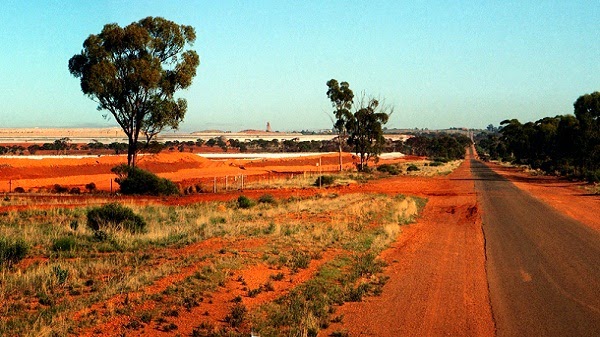
A Greenfields exploration has confirmed that present-day Kalgoorlie is close to an ancient coastline.
Geologist Ignacio Gonzalez-Alvarez says the Albany-Fraser Orogen, between the Eastern Goldfields and the sea, has been inundated several times over the past 60 million years.
He says the Yilgarn Craton, by contrast, was deformed by ancient river systems.
“[In] the Albany-Fraser Orogen, [the] main landscape evolution was controlled by transgression-regressions whereas in the Yilgarn Craton [it] was mainly controlled by fluvial systems,” he says.
As a result, the Albany-Fraser Orogen’s bedrock retains the form of countless islands, now mostly buried under regolith (soil and other loose material) up to 100m deep.
“Most of the cover … has been severely affected by transgressions and regressions during the last 60million years,” he says
“And that variation in the sea level has brought marine sediments very much into the continent up to almost Kalgoorlie.”
Although much of the Orogen’s regolith contains marine sediment, he says geochemical analysis of surface material often gives a poor understanding of the underlying geology.
Explorers paid very little attention to the Orogen until recent discoveries of gold (Tropicana project 400km northeast of Kalgoorlie) and copper-nickel (Nova project in the Fraser Range east of Norseman).
The two finds prompted the Orogen’s first extensive exploration, by UWA and CSIRO scientists.
They began to study the Orogen by driving from inland towns like Manjimup, Kojinup and Kalgoorlie towards the coast, stopping frequently to record elevations and take samples for geochemical analysis.
“That sedimentary dynamic or that transgression-regression environment was mainly featured by islands and estuaries and that poses quite a complication,” he says.
“We don’t have a straight line for the coast.”
They then conducted detailed studies at Salmon Gums, Woodline, Beachcomber and Neale, to define exploration protocols which help define proxies for basement geochemistry on the surface.
Dr Gonzalez-Alvarez says regolith sampled on top of the buried islands – which is largely formed by weathering – gives a more reliable indication of bedrock mineralisation.
On the other hand regolith covering the former seabed leads to more ambiguous readings.
“Some of the parts of the Albany-Fraser were not under sea water and that’s interesting in itself because it means that [for] those islands … many of the protocols from the Yilgarn Craton for exploration should be very useful.
He says mapping the islands in a comprehensive survey should open the Orogen up to profitable mineral exploration.
Dr Gonzalez-Alvarez is a senior research scientist at CSIRO, Earth Science and Resource Engineering, Minerals Down Under Flagship, Perth WA.
He and colleagues are yet to publish a paper of their study. You can see his PowerPoint here.
Note : The above story is based on materials provided by Science Network WA










